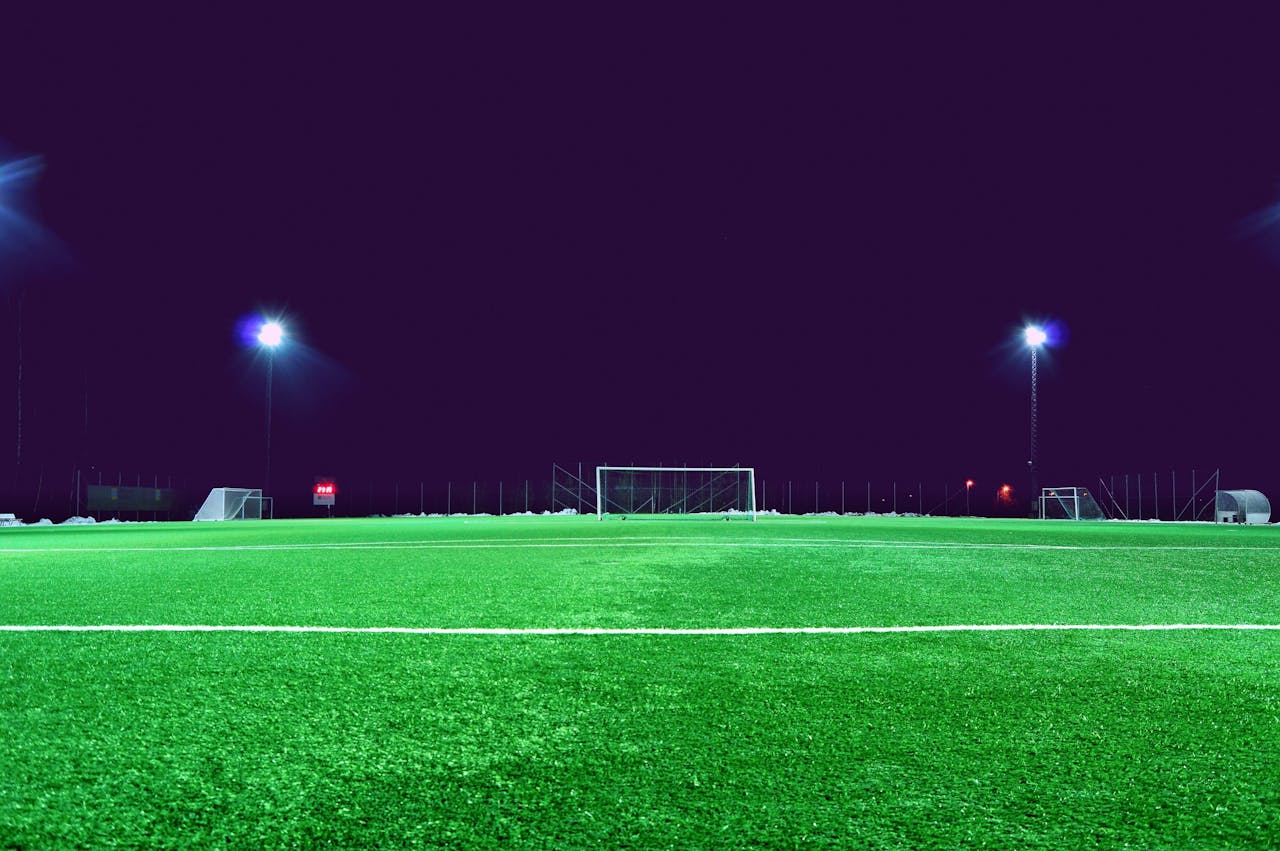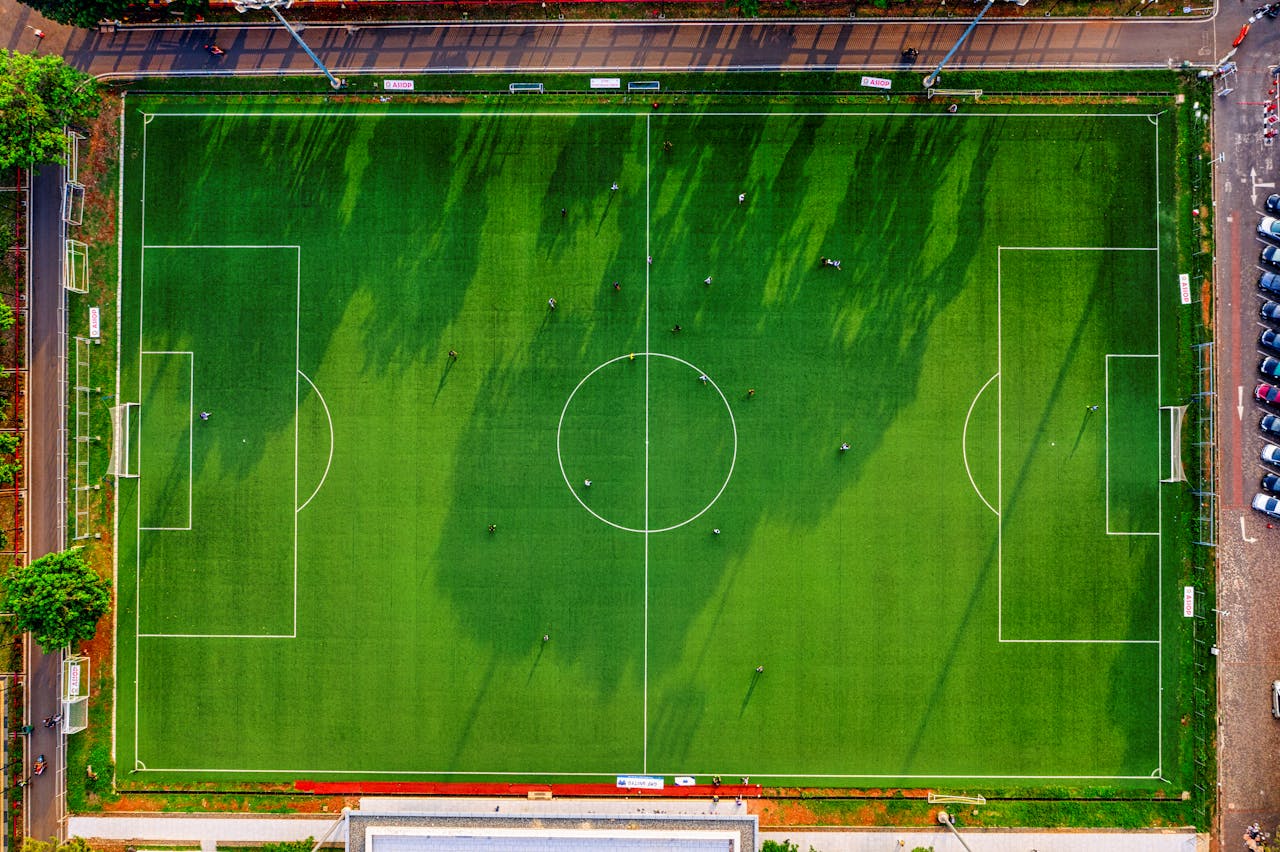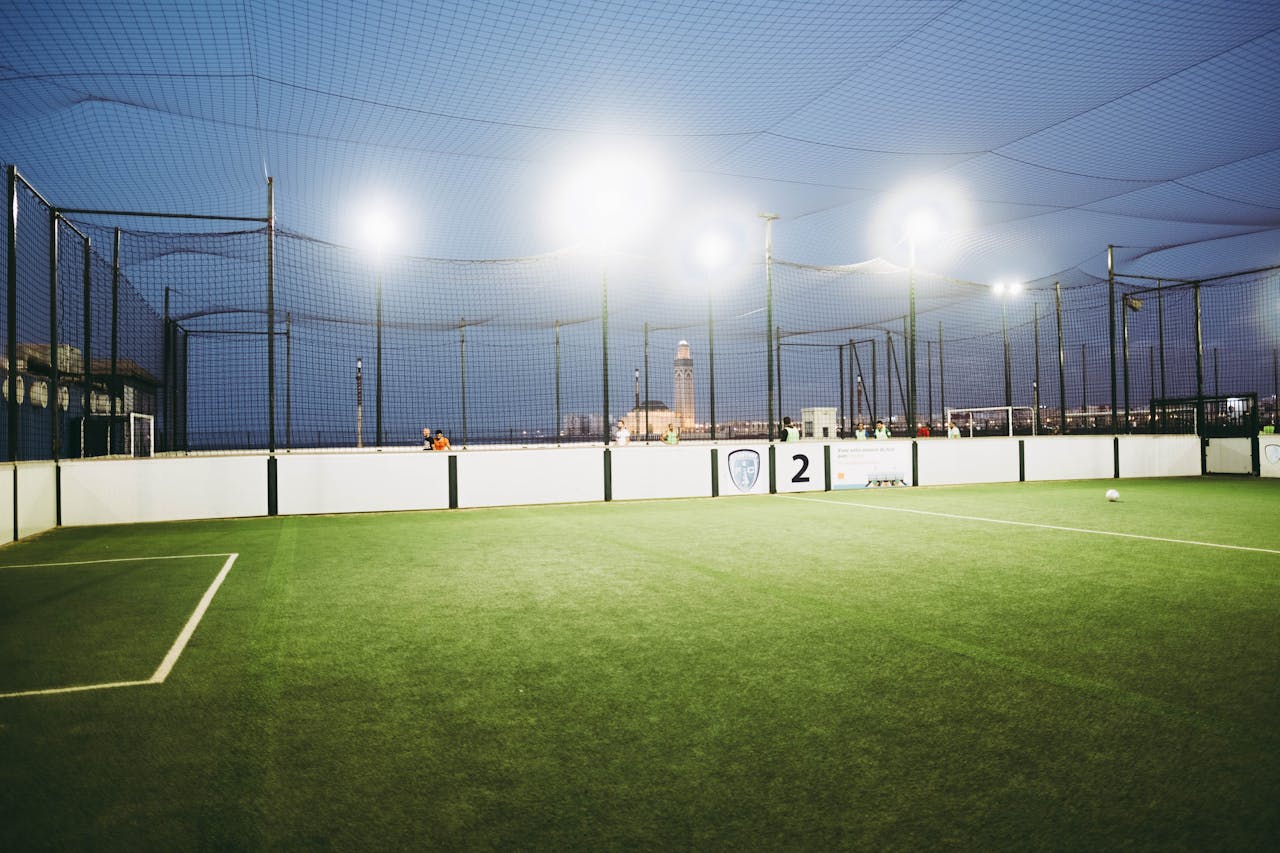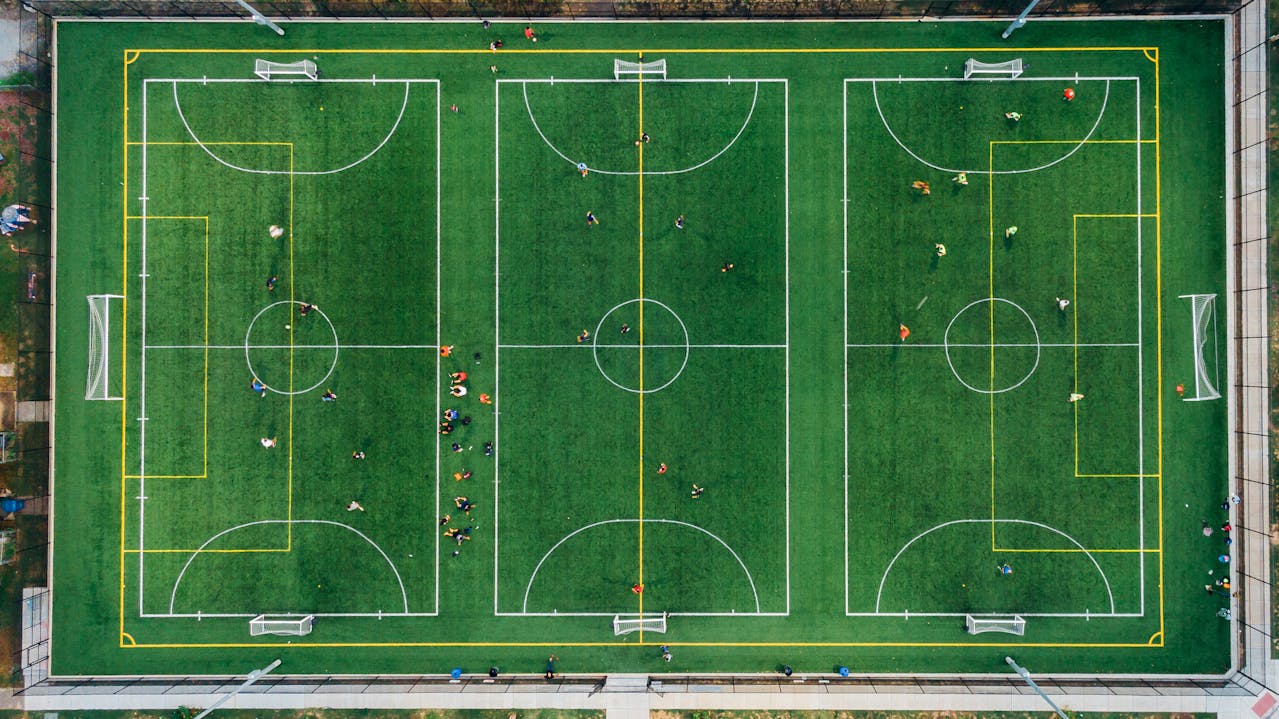From the sprawling pitches of world-class stadiums to the modest fields of local youth leagues, soccer fields come in a variety of sizes. Each dimension is carefully chosen to suit the needs of players at different skill levels and ages. In this comprehensive guide, we’ll explore the various soccer field dimensions, from the smallest youth fields to regulation-size professional pitches. We’ll also discuss how field size impacts player development and gameplay strategies.
The Importance Of Field Size In Soccer

Soccer field dimensions play a crucial role in shaping the game experience for players of all ages. The size of the pitch directly influences several aspects of play, including:
- Player engagement: Smaller fields ensure younger players have more touches on the ball, keeping them engaged and developing basic skills.
- Physical demands: As fields grow larger, players need to cover more ground, increasing endurance and fitness requirements.
- Tactical awareness: Bigger fields introduce more complex positional play and strategic thinking.
- Skill development: Different field sizes emphasize various skills, from close ball control on smaller pitches to long passes and positional play on larger ones.
Understanding these impacts helps explain why soccer organizations carefully regulate field sizes for different age groups and levels of play.
Also Read: When Do Soccer Players Retire? Retirement Age
Youth Soccer Field Dimensions

Youth soccer leagues typically group players into age divisions, with field sizes increasing as players grow older and more skilled. Let’s examine the dimensions for each youth age group.
U6 Soccer Fields
U6 fields are designed for the youngest players, typically under 6 years old. These small pitches are perfect for introducing children to the basics of soccer.
Dimensions
- Length: 75-105 feet
- Width: 45-75 feet
- Goal area: None
- Penalty area: None
U6 fields are intentionally compact to encourage constant engagement and frequent ball touches. Games are usually played in a 3v3 or 4v4 format, without goalkeepers. The absence of goal and penalty areas simplifies the game, allowing young players to focus on fundamental skills like dribbling, passing, and shooting.
U8 Soccer Fields
U8 fields maintain the same dimensions as U6 fields but introduce a 6v6 game format. This slight increase in players helps children develop more advanced teamwork and coordination skills.
Dimensions
- Length: 75-105 feet
- Width: 45-75 feet
- Goal area: None
- Penalty area: None
The familiar field size allows U8 players to build upon the skills they developed in U6, while the additional players on the field introduce new challenges and learning opportunities.
Also Read: Top 10 Fastest Soccer Players in 2024
U10 Soccer Fields
U10 fields mark a significant increase in size, reflecting the growing capabilities of players aged 9-10. These larger fields introduce elements that more closely resemble full-size soccer matches.
Dimensions
- Length: 165-195 feet
- Width: 105-135 feet
- Goal area: 24 feet wide, 12 feet deep
- Penalty area: 72 feet wide, 36 feet deep
U10 games typically use a 7v7 format and introduce goalkeepers. The larger field size and additional players allow for more complex tactics and teamwork drills.
U12 Soccer Fields
U12 fields are the largest youth fields before transitioning to full-size pitches. They accommodate players aged 11-12 who are ready to showcase more advanced skills and tactical awareness.
Dimensions
- Length: 210-240 feet
- Width: 135-165 feet
- Goal area: 48 feet wide, 15 feet deep
- Penalty area: 108 feet wide, 42 feet deep
U12 games typically use a 9v9 format, closely resembling professional matches. This field size allows young players to refine their skills in a setting that prepares them for full-size fields.
Also Read: Top 12 Best Trios In Football History
Soccer Field Sizes For Different Game Formats

Beyond age-specific dimensions, soccer fields can also vary based on the number of players per team. Let’s explore how field sizes change for different game formats.
3v3 Soccer Fields
3v3 games can be played on various field sizes, depending on the age group. For U6 and U8 players, the standard small field dimensions apply. For older players, 3v3 games might use a field about 50 feet shorter than their typical age group size. These compact fields promote fast-paced play and frequent ball touches, ideal for skill development.
6v6 Soccer Fields
6v6 games typically use fields averaging 135-180 feet in length and 105-135 feet in width. This format is common for players 9 years and older. With fewer players than full-size matches, 6v6 games use shallower team formations, necessitating smaller fields.
7v7 Soccer Fields
7v7 fields usually range from 165-195 feet long and 105-135 feet wide. This format introduces a unique feature called the “build-out line,” located 42 feet from each goal line. This line helps teams practice building play from the back, as opposing players must stay behind it when the goalkeeper has possession.
9v9 Soccer Fields
9v9 games, typically played by children 11 and older, use fields ranging from 210-240 feet long and 135-165 feet wide. This format serves as a bridge between youth soccer and full-size 11v11 matches, allowing players to practice more advanced tactical play.
11v11 Soccer Fields
11v11 is the standard format for professional soccer and uses the largest field dimensions. These fields must be 330-360 feet long and 210-240 feet wide, larger than an American football field. This size requires advanced endurance, tactical awareness, and teamwork.
Also Read: How Many Players Are on the Field During a Soccer Game?
Professional Soccer Field Dimensions

Professional soccer fields, used for 11v11 matches, have the most strictly regulated dimensions.
According to FIFA standards:
- Length: 330-360 feet (100-110 meters)
- Width: 210-240 feet (64-75 meters)
- Goal area: 18 yards wide, 6 yards deep
- Penalty area: 44 yards wide, 18 yards deep
While these dimensions allow for some variation, most top-level professional fields tend towards the maximum allowed size. The large playing area demands high levels of fitness, precise ball control, and strategic positioning from players.
How Field Size Impacts Gameplay and Development
The progression in field sizes from youth to professional levels is carefully designed to support player development:
- Skill focus: Smaller fields for younger players emphasize close ball control, short passing, and quick decision-making. As fields grow, long passing, positional play, and endurance become more important.
- Tactical complexity: Larger fields introduce more space between players, requiring more sophisticated tactical awareness and team coordination.
- Physical demands: The increasing field sizes naturally build players’ endurance and speed as they progress through age groups.
- Adaptability: Players who have experience on various field sizes develop adaptability, a crucial skill for success at higher levels.
- Home field advantage: At professional levels, teams may become accustomed to their home field’s specific dimensions, potentially providing a slight edge in home games.
Also Read: Top 10 Hottest Footballers In The World 2024
Conclusion
Soccer field dimensions play a crucial role in shaping the game experience and supporting player development. From the compact U6 fields that introduce young children to the sport, to the expansive professional pitches that host world-class matches, each size is carefully chosen to suit the needs and abilities of its players.
Understanding these dimensions helps players, coaches, and fans appreciate the nuances of the beautiful game at every level. As young players progress through increasingly larger fields, they not only develop their physical skills and endurance but also enhance their tactical understanding and teamwork abilities.
Soccer truly is a game that grows with its players, using field size as a key tool in nurturing talent from the grassroots to the global stage.
